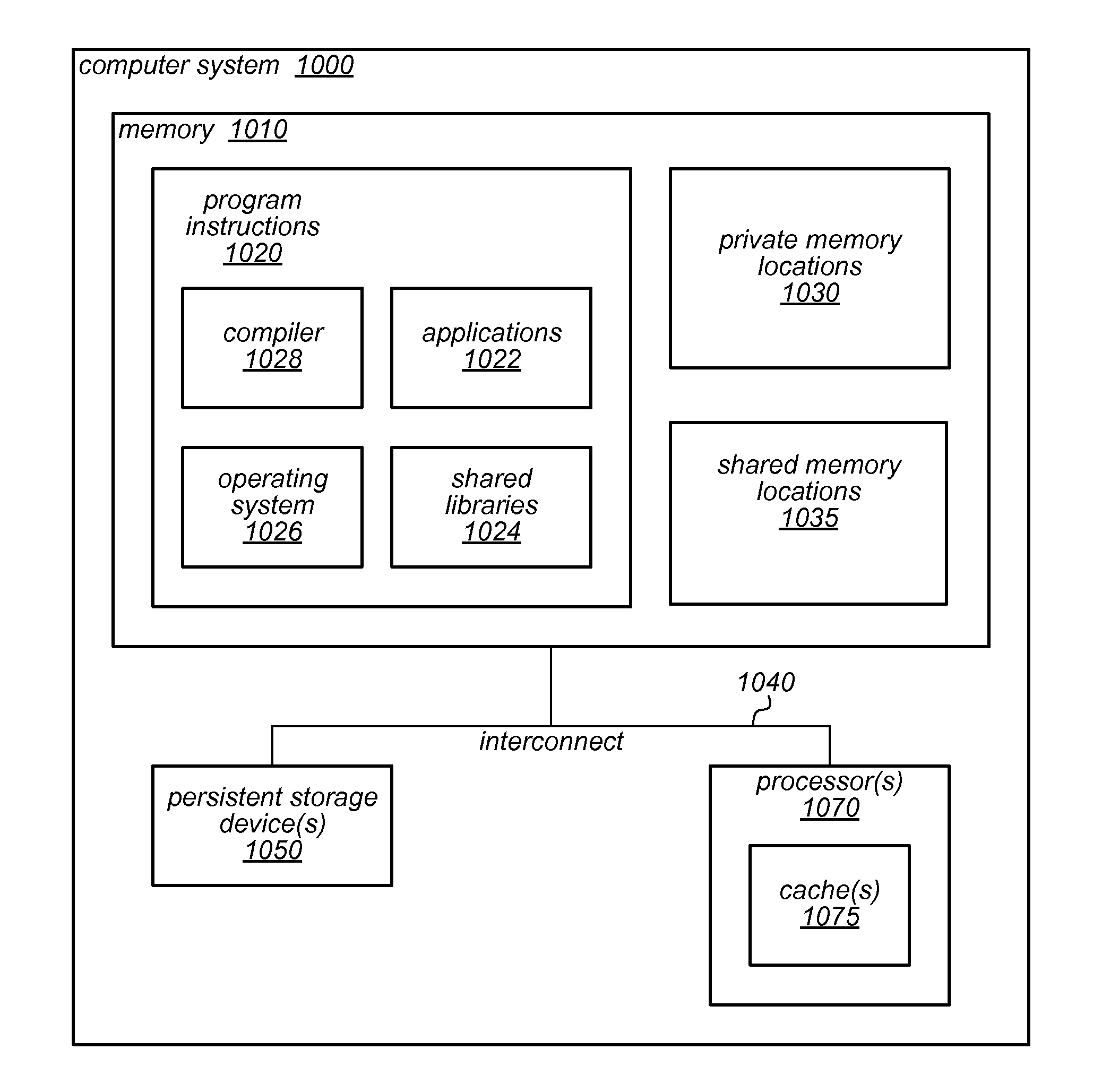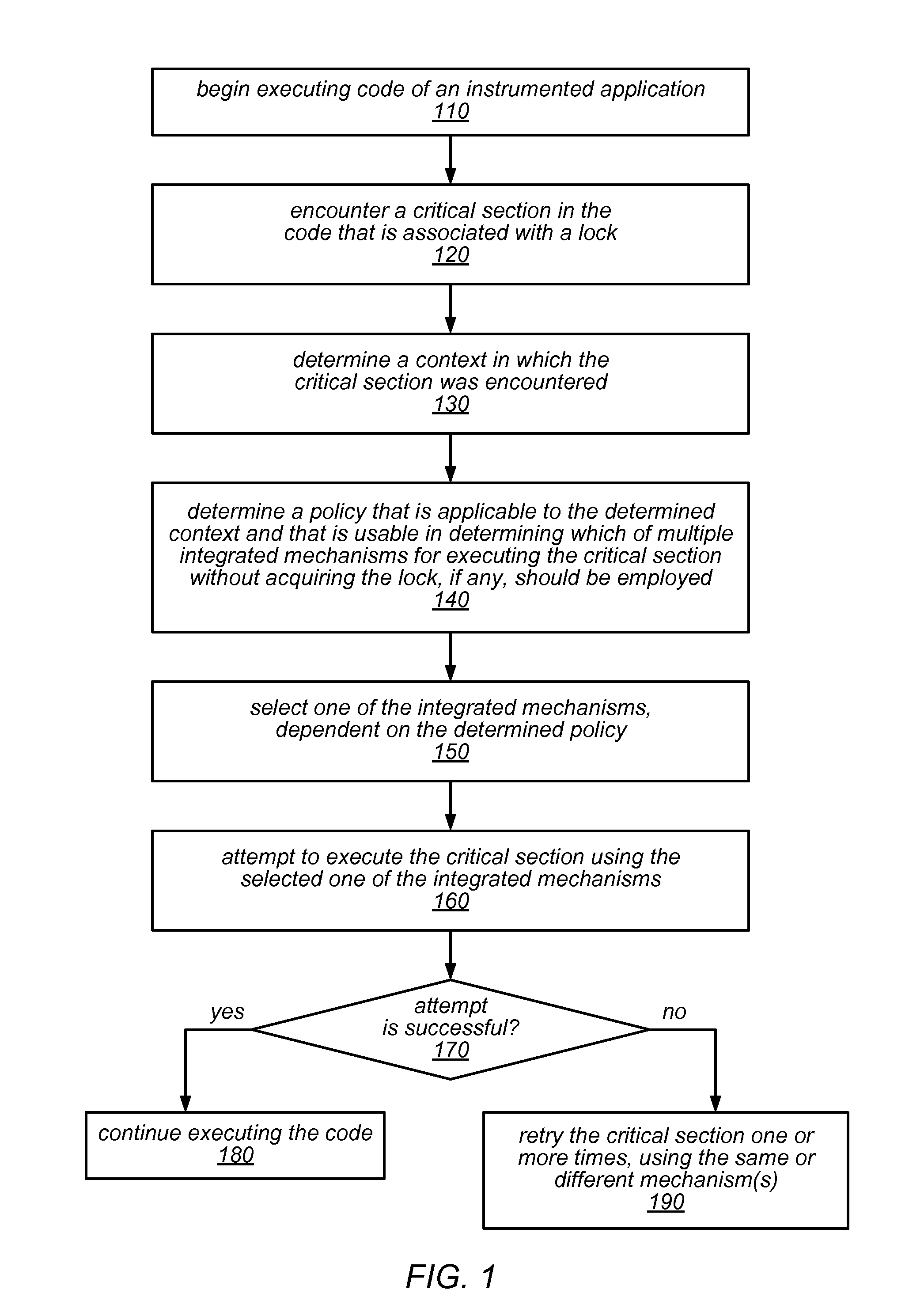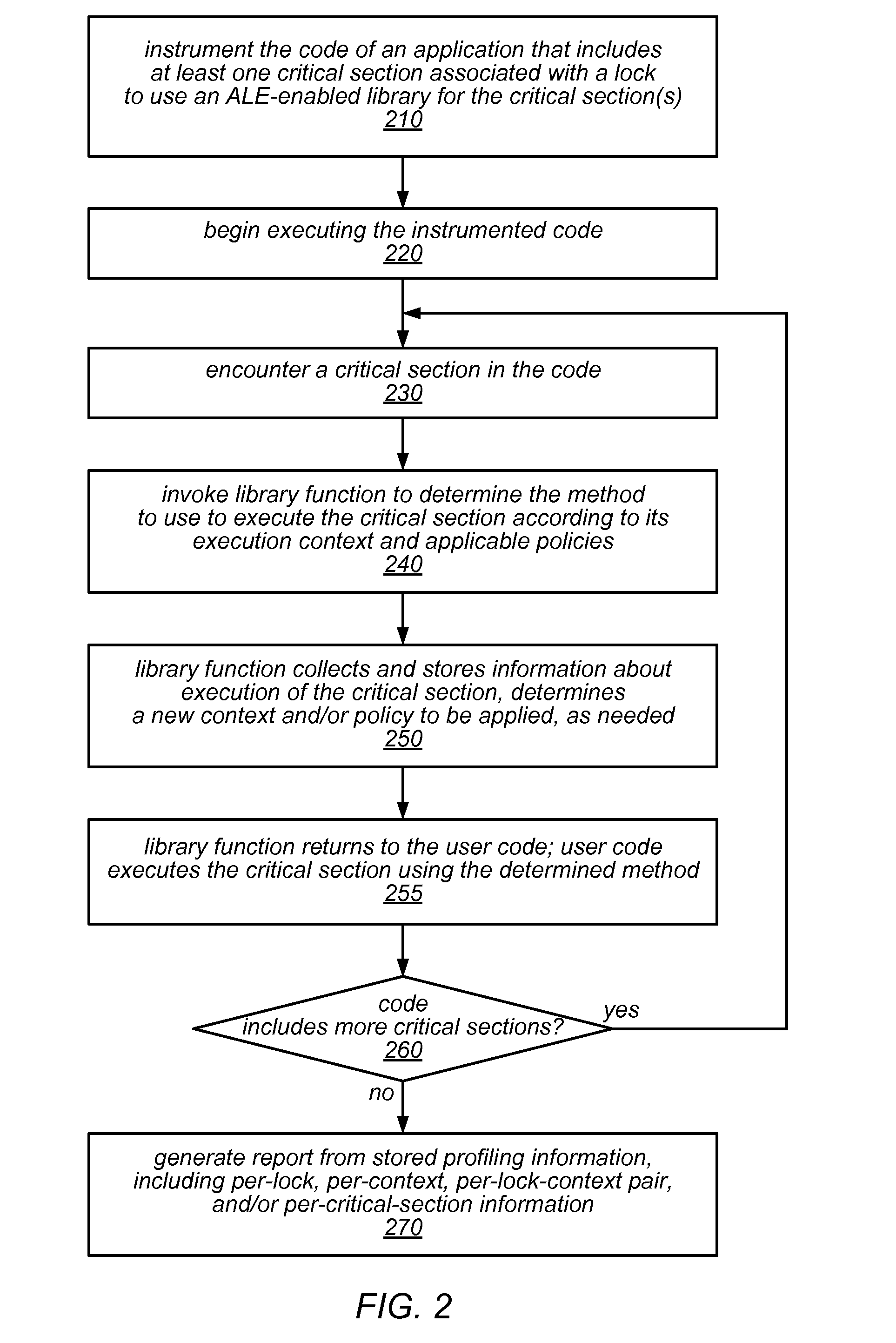Systems and Methods for Adaptive Integration of Hardware and Software Lock Elision Techniques
a hardware and software lock elision technology, applied in the field of systems and methods for implementing adaptive lock elision, can solve the problems of increasing latency gap, ineffective improvement of scalability (or even harming scalability) for other use cases, and increasing the difficulty of building scalable applications that can do so, so as to improve the scalability of concurrent programs and improve the scalability and/or performance of these applications
- Summary
- Abstract
- Description
- Claims
- Application Information
AI Technical Summary
Benefits of technology
Problems solved by technology
Method used
Image
Examples
Embodiment Construction
[0026]Transactional Lock Elision (TLE) and optimistic software execution are two types of techniques for improving the scalability of lock-based programs. The former uses hardware transactional memory (HTM) to improve scalability without requiring code changes, while the latter may involve modest code changes but may not require special hardware support. The most effective technique(s) to use to support the development of scalable concurrent programs in a particular situation may depend on any of numerous factors, including, but not limited to: critical section code, calling context, workload characteristics, hardware platform and / or available hardware support for synchronization.
[0027]For example, the best lock elision mechanism to use in a particular context often depends on the workload, which may change over time even for a given application on a given platform. Therefore, developers generally cannot determine in advance which mechanism is best for a particular situation. Differ...
PUM
 Login to View More
Login to View More Abstract
Description
Claims
Application Information
 Login to View More
Login to View More - R&D
- Intellectual Property
- Life Sciences
- Materials
- Tech Scout
- Unparalleled Data Quality
- Higher Quality Content
- 60% Fewer Hallucinations
Browse by: Latest US Patents, China's latest patents, Technical Efficacy Thesaurus, Application Domain, Technology Topic, Popular Technical Reports.
© 2025 PatSnap. All rights reserved.Legal|Privacy policy|Modern Slavery Act Transparency Statement|Sitemap|About US| Contact US: help@patsnap.com



